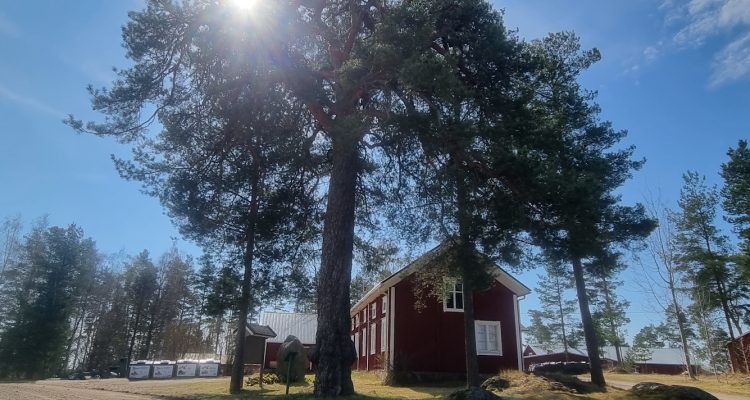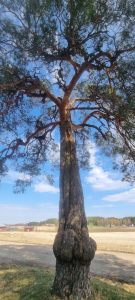Standing next to an old building is a large pine tree which looks deceptively benign to the uninformed visitor. I was visiting Kuortane in the Southern Ostrobothnia region and had read of an old whipping tree in the village of Salmi called Piiskoomänty (whipping pine). I wanted to learn more about one of the outdoor areas that are forever linked to the Finnish legal system, so I popped by to check it out.
Knowing the history of corporal punishments and their horrid effects, seeing the bulging pine tree did make me shiver. I ran my hand across the bark and had a moment of silence for those who had suffered there. I can’t imagine how incredibly horrific this punishment has been. But that’s why I wanted to visit Piiskoomänty – to remind myself of how brutal life was in previous centuries for everyone.
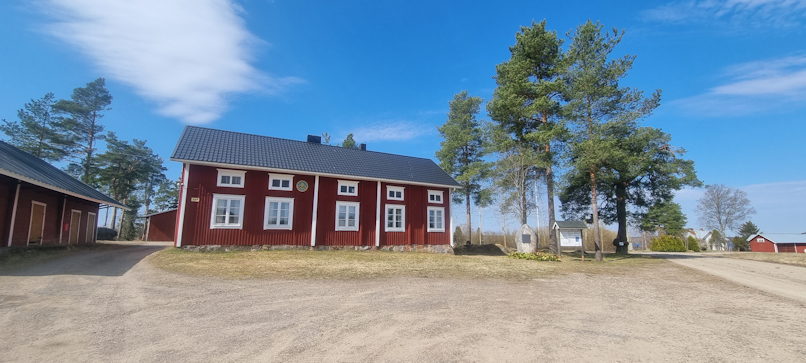
Nature connected to punishments
The house sitting next to Piiskoomänty is the Salmi house (Salmen talo), which was used to hold the local county gatherings called käräjät. These käräjät were generally a meeting of the oldest, most educated or elected representatives, where people gathered from different parts of the county to take care of common matters. Käräjät were, for example, used to exchange information, decide on issues, make legal decisions, or uphold laws, traditions, and relationships.
Trees such as Piiskoomänty were used to deliver punishments to convicted criminals. Here, Piiskoomänty was right outside the house where sentencing was done. Often, the sentence was put into effect immediately. Whippings were brutal punishments and could, at worst, lead to death. The whipping was done by a provost, which is an equivalent of a government civil officer, a magistrate, or the head of a cathedral or a church. Occasionally, the whipping could also be done by a professional executioner working for the county. The convict was tied to Piiskoomänty and left dangling there without their feet touching the ground for the duration of the whipping. The maximum amount of lashes given was 40, and the three-tongued leather straps used were soaked in water to keep them pliable. Needless to say, an absolutely terrible punishment.
Despite their gruesomeness, whippings were social events. Usually the entire nearby population would gather to watch the whipping. This meant that on top of possibly losing your life, the convicted criminal had to face social shame as well. Whippings were used as punishments from the 17th century onward but they were removed as a punishment with the renewal of the Criminal Code of Finland in 1889.
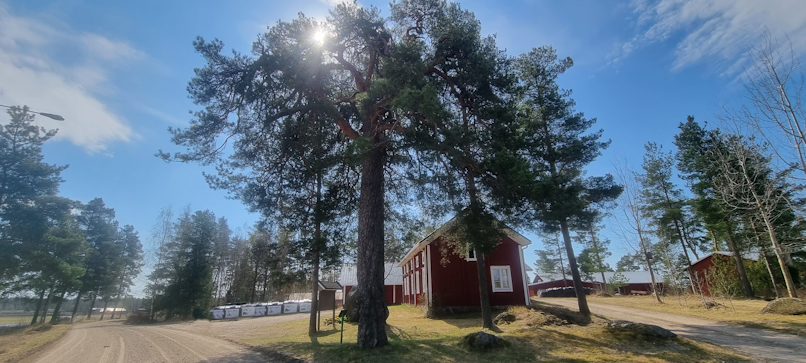
Piiskoomänty as a local war memorial
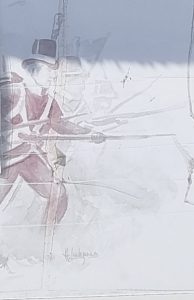
During the Finnish war fought between Sweden (which Finland was a part of) and Russia in 1808-1809, Salmi was a site of a major battle. The Finns successfully fought off the Russians in the nearby village of Ruona. However, to the disappointment of the soldiers, despite their success, the troops were ordered to retreat. The Russian troops followed the Finns, and the two forces met at Salmi village on 2.9.1808. The battles in Ruona and Salmi were some of the major ones which effectively allowed Russia to win the Finnish war and gain Finland from Sweden.
Piiskoomänty is also an important war memorial of the local troops from Kuortane who went to fight in the Finnish civil war in 1918. The 5-month civil war remains an excruciatingly painful part of Finnish history. This is why it’s still often referred to by some as “the liberation war” (vapaussota) or “the citizen war” (kansalaissota). The remembrance plaque was erected by the locals in 1996.
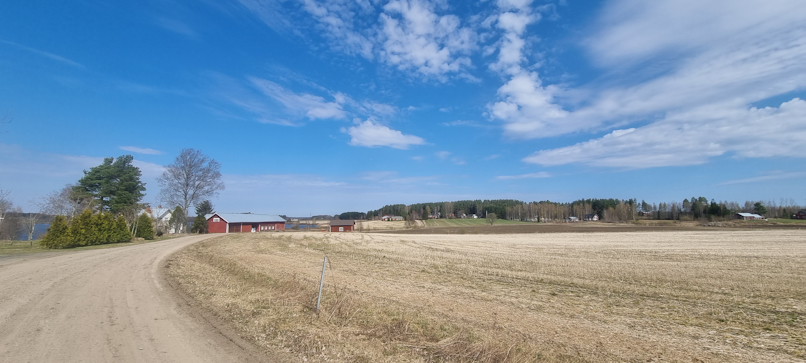
Directions to Piiskoomänty
Address: You can type Piiskoomänty in your navigator. Alternatively, you can also type in Ruonantie 568, 63160 Salmi.
How to get there:
- Car: There is space for few cars nearby the tree at the Salmi village hall (Salmen talo).
- Bicycle: The terrain at Southern Ostrobothnia region is generally quite flat and easy to cycle on.
- Public transport: You can get to nearby Kuortane town by public transport. The closest bus stop that buses run year-round is Kuortaneen urheiluopisto. Unfortunately, it’s still 8,4km (5.2mi) away from Piiskoomänty. Check the Route Planner for timetables.
Accessibility: The Piiskoomänty is accessible all year long.
When to go: You can visit at any time of the year.
Facilities: There are no official facilities in the area. However, Kuortane town is relatively close to the tree.
Make sure you also check out
Make sure to check the most beautiful tree in Finland by visiting Paavola oak. The largest tree in Finland is the Tsaarinpoppeli tree in Heinola.

